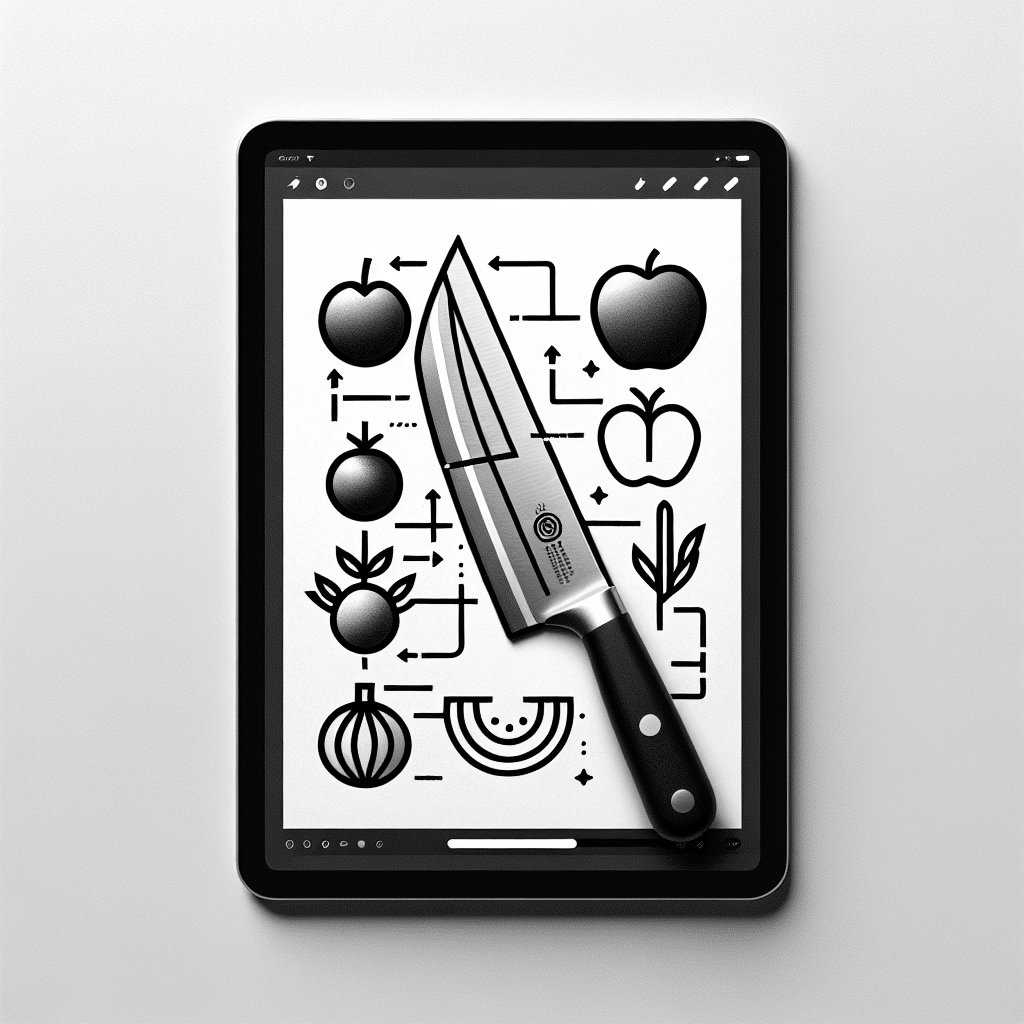A paring knife is a small, versatile kitchen tool designed for intricate tasks where precision is key. Typically featuring a blade around 3 to 4 inches in length, it’s ideal for peeling, trimming, and slicing fruits and vegetables. With its pointed tip and maneuverable blade, a paring knife enhances your ability to perform detailed culinary tasks like deveining shrimp, removing the seeds from jalapeños, or hulling strawberries. This essential tool is favored by both professional chefs and home cooks for its ability to perform delicate cuts and handle intricate work that larger knives cannot achieve efficiently. In sum, a paring knife is invaluable for any kitchen, elevating your food preparation experience with its precision and functionality.
Understanding the Paring Knife
The paring knife, an essential tool in any kitchen, plays a critical role in food preparation. Its compact size, typically with a blade length of 3 to 4 inches, allows for a high degree of control, making it ideal for detailed tasks. Its design usually features a straight-edged blade with a pointed tip, providing the versatility needed for various applications such as peeling, coring, trimming, and segmenting fruits and vegetables.
Key Uses of a Paring Knife
While the paring knife may seem simple, its uses are extensive. Here are some primary applications:
1. Peeling Fruits and Vegetables
One of the most common uses of a paring knife is peeling. The thin blade allows you to easily remove the skin from fruits like apples, pears, and potatoes, ensuring minimal waste. When peeling delicate items like tomatoes, the pointed tip helps you make precise incisions in the skin, making it easier to remove.
2. Trimming and Slicing
Aside from peeling, the paring knife excels in trimming and slicing small items. Whether you’re removing blemishes from potatoes or slicing small fruits, this knife provides the ideal precision for smaller cuts that could be challenging with larger knives.
3. Coring
Removing stems or cores from fruits like apples, pears, or bell peppers is a common task. The paring knife’s sharpness and maneuverability allow you to core these items with ease, enabling you to prepare them for various culinary applications.
4. Deveining Seafood
For those who enjoy cooking seafood, the paring knife is particularly useful for deveining shrimp. Its thin blade allows you to carefully make the necessary cuts without damaging the delicate meat.
5. Hulling Fruits
When preparing strawberries or other similar fruits, hulling them becomes a seamless job. The pointed tip makes it easy to remove the green tops without losing much of the fruit itself.
6. Creating Garnishes
If you enjoy presenting your dishes attractively, a paring knife is perfect for crafting intricate garnishes. From slicing citrus into decorative shapes to creating delicate cuts on vegetables, this tool is invaluable for enhancing your visual presentation.
Choosing the Right Paring Knife
When selecting a paring knife, several factors come into play:
1. Blade Material
The blade material significantly affects the knife’s longevity and performance. High-carbon stainless steel is a popular choice for its sharpness and resistance to rust, making it both practical and durable.
2. Handle Design
A comfortable, ergonomic handle is essential for good grip and control. It’s worthwhile to choose a handle that fits well in your hand, which can reduce fatigue during extended use. Materials vary, with options including wood, plastic, and rubberized grips that offer varying levels of comfort.
3. Weight and Balance
The knife’s weight should feel comfortable during use. A well-balanced paring knife ensures ease of control, enhancing precision when performing delicate tasks.
How to Maintain Your Paring Knife
Proper maintenance will prolong the lifespan of your paring knife:
1. Regular Sharpening
Keeping your paring knife sharp is essential for safe and efficient cutting. Use a whetstone or sharpening steel periodically to maintain the blade’s sharpness.
2. Hand Washing
Avoid using a dishwasher, as the high heat can damage the blade and handle. Instead, wash your knife by hand with mild soap and warm water, then dry it immediately to prevent rust.
3. Proper Storage
Store your paring knife in a knife block, on a magnetic strip, or in a sheath to protect both the blade and your fingers. Proper storage prevents accidental injuries and keeps your knife in optimal condition.
Counterarguments: Common Misconceptions about Paring Knives
Despite their versatility, several misconceptions exist:
1. “Paring Knives Are Just for Peeling.”
While peeling is one primary use, the versatility of paring knives extends far beyond this solitary purpose. Their design allows for a broad array of tasks that require precision.
2. “You Don’t Need a Paring Knife If You Have a Chef’s Knife.”
While a chef’s knife can perform many tasks, its size and weight make it less practical for detailed work. A paring knife provides the control needed for intricate tasks that a larger knife struggles with.
Frequently Asked Questions (FAQs)
What is the difference between a paring knife and a utility knife?
A paring knife is specifically designed for precision tasks like peeling and trimming, with a shorter blade. In contrast, a utility knife is typically larger and can handle a broader range of tasks, although it lacks the exactness of a paring knife.
Can I use a paring knife for cutting meat?
While it’s possible to use a paring knife for small cuts of meat, it’s not ideal for larger tasks. Its design is better suited for fruits and vegetables. A chef’s knife or similar larger knife is recommended for meat preparation.
Are there specific brands recommended for paring knives?
Some highly regarded brands in the culinary world include Wüsthof, Victorinox, and Global. Each offers various models that emphasize quality, durability, and cutting performance.
Conclusion
In conclusion, the paring knife is an indispensable tool for anyone serious about cooking. Its design facilitates a variety of precision tasks that larger knives cannot match, making it a must-have for both amateur cooks and seasoned chefs. By understanding its uses, maintenance, and proper selection, you can enhance your culinary skills and make your preparation process more efficient and enjoyable.



